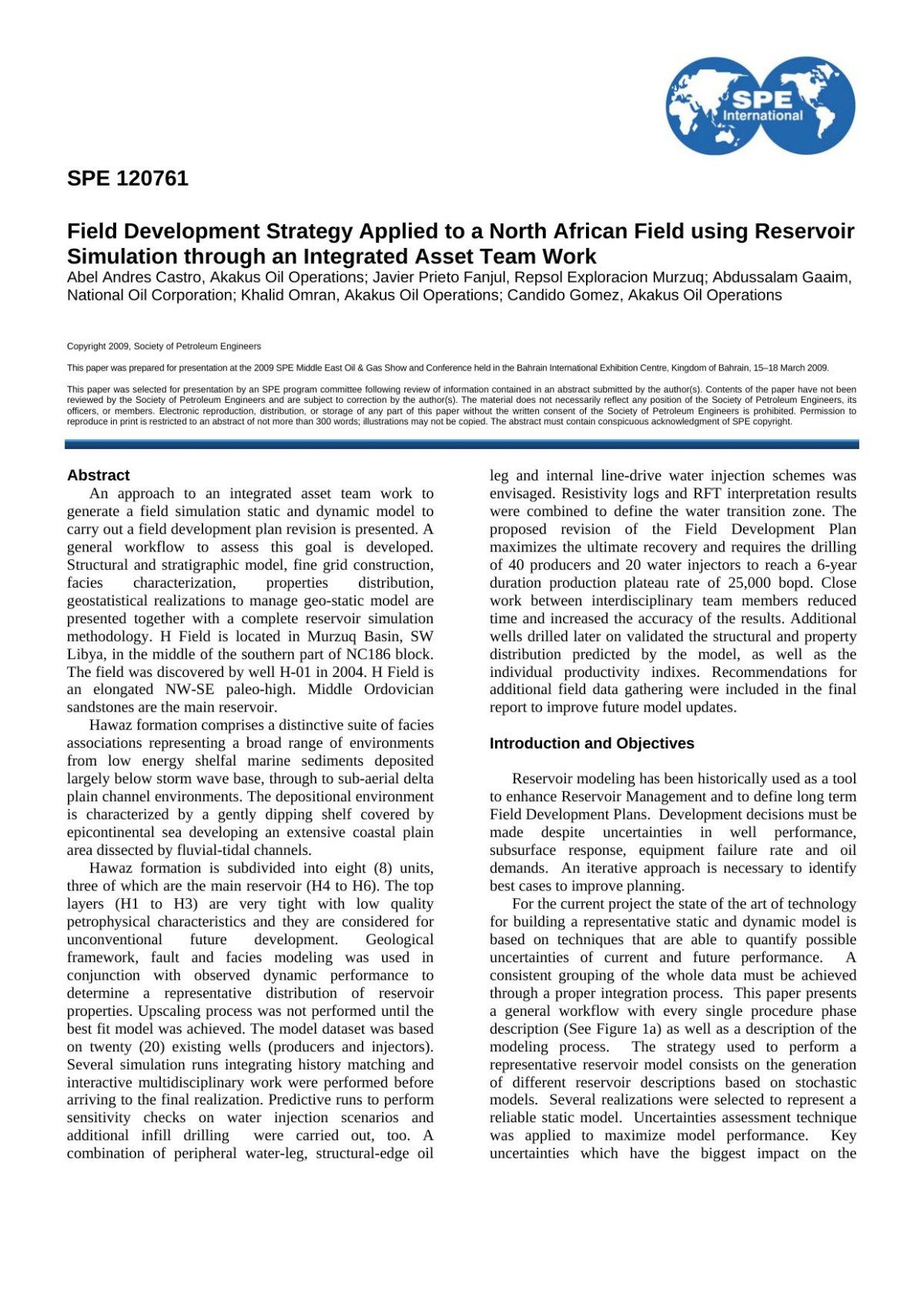

Most ebook files are in PDF format, so you can easily read them using various software such as Foxit Reader or directly on the Google Chrome browser.
Some ebook files are released by publishers in other formats such as .awz, .mobi, .epub, .fb2, etc. You may need to install specific software to read these formats on mobile/PC, such as Calibre.
Please read the tutorial at this link: https://ebookbell.com/faq
We offer FREE conversion to the popular formats you request; however, this may take some time. Therefore, right after payment, please email us, and we will try to provide the service as quickly as possible.
For some exceptional file formats or broken links (if any), please refrain from opening any disputes. Instead, email us first, and we will try to assist within a maximum of 6 hours.
EbookBell Team

4.7
66 reviewsAn approach to an integrated asset team work to generate a field simulation static and dynamic model to carry out a field development plan revision is presented. A general workflow to assess this goal is developed.
Structural and stratigraphic model, fine grid construction, facies characterization, properties distribution, geostatistical realizations to manage geo-static model are presented together with a complete reservoir simulation methodology. H Field is located in Murzuq Basin, SW Libya, in the middle of the southern part of NC186 block. The field was discovered by well H-01 in 2004. H Field is an elongated NW-SE paleo-high. Middle Ordovician sandstones are the main reservoir.
Hawaz formation comprises a distinctive suite of facies associations representing a broad range of environments from low energy shelfal marine sediments deposited largely below storm wave base, through to sub-aerial delta plain channel environments. The depositional environment is characterized by a gently dipping shelf covered by epicontinental sea developing an extensive coastal plain area dissected by fluvial-tidal channels.
Hawaz formation is subdivided into eight (8) units, three of which are the main reservoir (H4 to H6). The top layers (H1 to H3) are very tight with low quality petrophysical characteristics and they are considered for unconventional future development. Geological framework, fault and facies modeling was used in conjunction with observed dynamic performance to determine a representative distribution of reservoir properties. Upscaling process was not performed until the best fit model was achieved. The model dataset was based on twenty (20) existing wells (producers and injectors).
Several simulation runs integrating history matching and interactive multidisciplinary work were performed before arriving to the final realization. Predictive runs to perform sensitivity checks on water injection scenarios and additional infill drilling were carried out, too. A
…